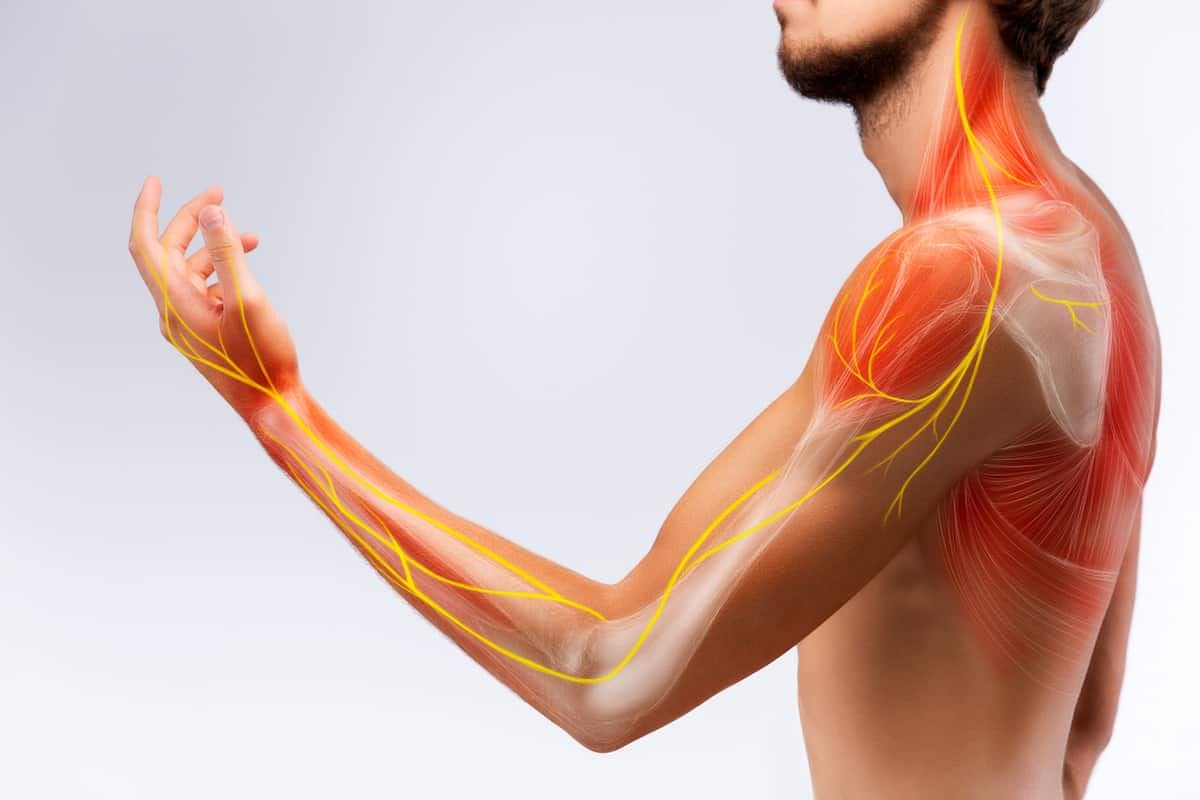- Blog
Peripheral Nerve Stimulation Treatment
Posted on 12-12-2025 by Dr. Joshua Hackel

Posted on 12-12-2025 by Dr. Joshua Hackel
Peripheral nerve stimulation is an established treatment modality that reduces chronic pain symptoms by directly targeting the peripheral nerves that relay pain signals to the brain. Using rapid electrical pulses, a peripheral nerve stimulator “crowds out” pain signals sent to the brain, granting patients lasting relief from chronic musculoskeletal pain. Furthermore, patients can directly moderate the pulse, frequency, and intensity of the electrical pulses, putting them in full control of their pain relief without the need for medication or invasive surgery.
How It Works
Peripheral nerve stimulation is a type of neuromodulation, a class of treatment modalities that seek to achieve clinical goals by directly acting on the nervous system itself. During the peripheral nerve stimulator procedure, your physician will implant a small, metallic device, known as an electrode or lead, under the skin and in close proximity to a peripheral nerve. Your physician will decide which nerve to target based on your history, symptoms, and an assessment of which nerve is likely relaying pain signals to the brain. Once implanted, the lead will emit bursts of electricity, which might feel like mild tingles that interrupt the pain signals sent through the central nervous system. The interruption of these pain signals ultimately provides lasting relief, as the brain will have difficulty registering pain while the signals are interfered with.
What Can It Treat?
One of the greatest appeals of peripheral nerve stimulation is that it can be used to treat such a wide variety of musculoskeletal issues. Because the procedure aims to interrupt the transmission of pain itself, it can be used to address pain resulting from any condition that transmits pain signals through the peripheral nerves, located outside of the brain and spinal cord itself. The chronic pain conditions that peripheral nerve stimulation is commonly used to treat include:
What To Expect
If you believe that your chronic pain might make you a candidate for peripheral nerve stimulation, the first step is to reach out to your physician and set up an appointment for an initial evaluation. Your physician will conduct a detailed history and physical examination and order any necessary diagnostic tests to identify the root cause of your chronic pain.
If it is determined that you are a candidate for a peripheral nerve stimulation procedure, the next step is to undergo a trial peripheral nerve stimulator implant. This procedure will directly test whether your pain is reduced via peripheral nerve stimulation by implanting a temporary lead. If this procedure successfully reduces your pain, you can undergo a full-scale peripheral nerve stimulator implant to achieve lasting relief.
Advantages of Peripheral Nerve Stimulation
For those struggling with chronic pain, peripheral nerve stimulation has several advantages over other common treatments. First, it is a minimally invasive procedure performed in the outpatient setting, so the risks of undergoing the procedure are far less than traditional surgical intervention. The likelihood of complication is far lower. Second, the external stimulators and digital programmers that make up a peripheral nerve stimulator system put you in full control of your pain relief, allowing you to ramp up relief when necessary or dial it back when your pain is minimal. This stands in stark contrast to other “one-size-fits-all” treatments like surgery. Finally, peripheral nerve stimulators offer lasting pain relief free from opioids and other controlled substances, which is incredibly important as our country grapples with the ongoing opioid crisis.
If you are suffering from daily chronic pain and think you might benefit from a peripheral nerve stimulator procedure, complete our online Appointment Request form to schedule your initial consultation with Dr. Josh Hackel!

September is Healthy Aging Month, an observance dedicated to promoting the positive aspects of growing older and encouraging proactive steps toward maintaining long-term health. In its 33rd year, Healthy Aging Month inspires adults of all ages to focus on lifestyle habits that support vitality, independence and overall well-being.

Musculoskeletal ultrasound imaging offers orthopaedic patients safe, painless, and real-time imaging, without any harmful ionizing radiation or the need for uncomfortable positioning. As the first sports medicine physician in the region to utilize ultrasound for diagnostic and therapeutic purposes, Dr. Josh Hackel’s commitment to innovation has improved the accessibility of care for his patients.

According to the American Academy of Orthopaedic Surgeons, approximately 2 million older Americans sustain fractures yearly due to weak bones. By 2025, that number is predicted to rise to 3 million fractures annually. At North Florida Bone & Joint Specialists, we recognize the importance of maintaining strong bones, particularly as you age. In honor of Healthy Aging Month, the following tips can help you maintain, and even improve, your bone strength: